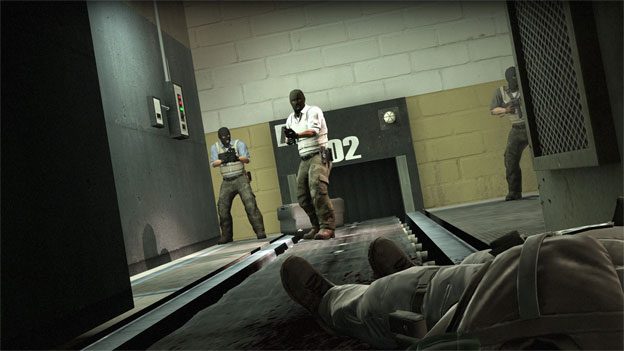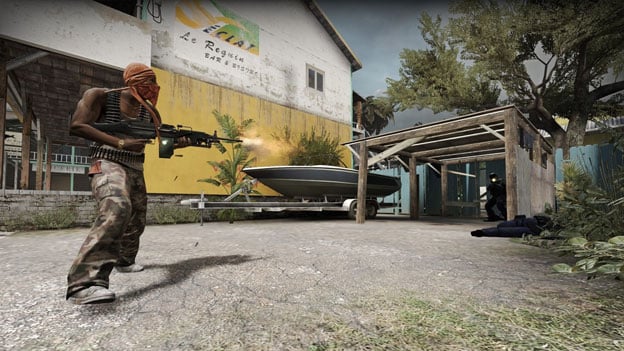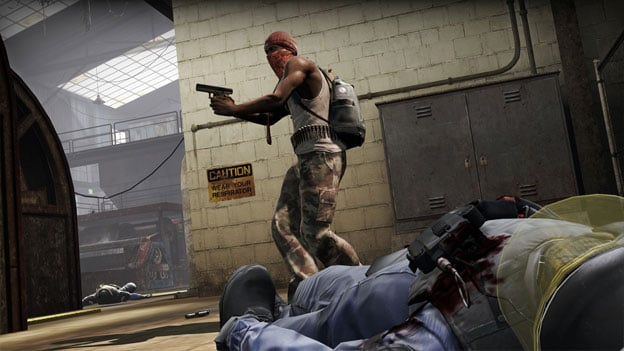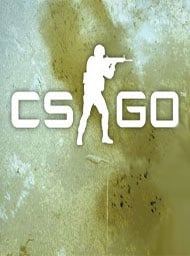As influential as Call of Duty, Battlefield, and Gears of War have been when it comes to online multiplayer, no game has had as big an impact as 2000's Counter-Strike. Originally created as a mod for Half-Life—which turned that single-player sci-fi shooter into a multiplayer gun battle between terrorists and counter-terrorists—it took on a life of its own, with the officially released version selling more than 25 million copies. As a result, its influence has been profound and deep, even inspiring modes and tenets in, yes, Call of Duty, Battlefield, and Gears.
Now the game is getting a new lease on life in the form of Counter-Strike: Global Offensive, which will be available as a download this summer. While it's not a whole new Counter-Strike game, it is a revamped update that culls together the best aspects of the game's numerous variations.

For Counter-Strike veterans, the biggest and best news is that while Global will feature eight classic maps, including such favorites as Aztec, Inferno, Dust, and Dust 2. It will also have eight new maps, though all of these will be for the "Arsenal" modes (which we'll get to later).
At a Microsoft event held last week at San Francisco's' Bentley Reserve, where we got some hands-on time with the XBLA edition, we had a chance to check a new map called "Lake." It's a small stretch of land on a serene body of water with a four-bedroom, two-and-a-half bath country-style house, a garage, and a small construction area complete with piles of cover-providing building materials. It would be a really lovely place to raise a family were it not for all the shooting.
Global will also feature a number of little gameplay tweaks pulled from various editions of the game, essentially making this version a sort of Best of Counter-Strike: things such as weapon strengths, control sensitivity options, and so on. Valve has also been conducting a beta test with the PC edition, which has not only provided them with player feedback, but in-game player data as well. They've even made sure to consult with professional Counter-Strike players, to get their perspective on the game.
Though why this hasn't led to a proper Counter-Strike sequel—one with all-new maps and modes—instead of this upgraded update is a bit odd.
That said, for those who've never played Counter-Strike, this frantic shooter holds up, even if it's nearly a teenager. At the event, we played a mode called "Arsenal – Demolition," in which the terrorists try to plant a bomb while the Counter-Terrorists try to stop them. Making things trickier for both sides, each successive round gives players an increasingly weaker weapon. Starting off with a powerful machine gun, you then go down to a P90, and then a shotgun.

Playing, as we said, on the Xbox 360, we found the controls to be as smooth and responsive as any top-notch first-person shooter. Though we did notice one thing that might put off hardcore fans of current FPS controls: the lack of ironsights. Instead of pulling the gun up for added accuracy, pulling the left trigger put us into a slight crouching position. Now, this does help your accuracy while making you a smaller target, but for those used to ironsights—especially if there's a snap-to-target mechanic included—this crouch move will take some getting used to.

As for the other modes, the game has two classics playable on vintage maps: "Demolition," which is the aforementioned bomb mode without the gun issues, and "Hostage," which is like "Capture the Flag" if the "Flag" was a person who didn't like getting shot. There's also a second "Arsenal" type called "Arsenal – Arms Race," which plays like "Deathmatch," except that with each successive kill, you get a different weapon. Unlike "Arsenal – Demolition," though, the succession doesn't go by weapon strength or weakness; instead, everyone goes through the same line-up, and all end with a knife. Thus, the winner is the one who makes the first knife kill.
New players need not worry that they'll be getting knifed all the time, though, as Global will not only feature skill-based matchmaking, but a casual mode as well.
Counter-Strike: Global Offensive may not be the sequel fans have been waiting a decade to play, but with a wish list of the strongest features, it may be the best version of the game yet. Even better, it's a chance for those who've missed out to play one of the most influential online shooters of all time.
By Paul Semel
CCC Contributing Writer
Game Features:
Counter-Strike: Global Offensive (CS: GO) will expand upon the team-based action gameplay that it pioneered when it was launched twelve years ago.CS: GO features new maps, characters, and weapons and delivers updated versions of the classic CS content (de_dust, etc.). In addition, CS: GO will introduce new gameplay modes, matchmaking, leaderboards, and more.CS: GO promises to expand on CS' award-winning gameplay and deliver it to gamers on the PC as well as the next gen consoles and the Mac.

















